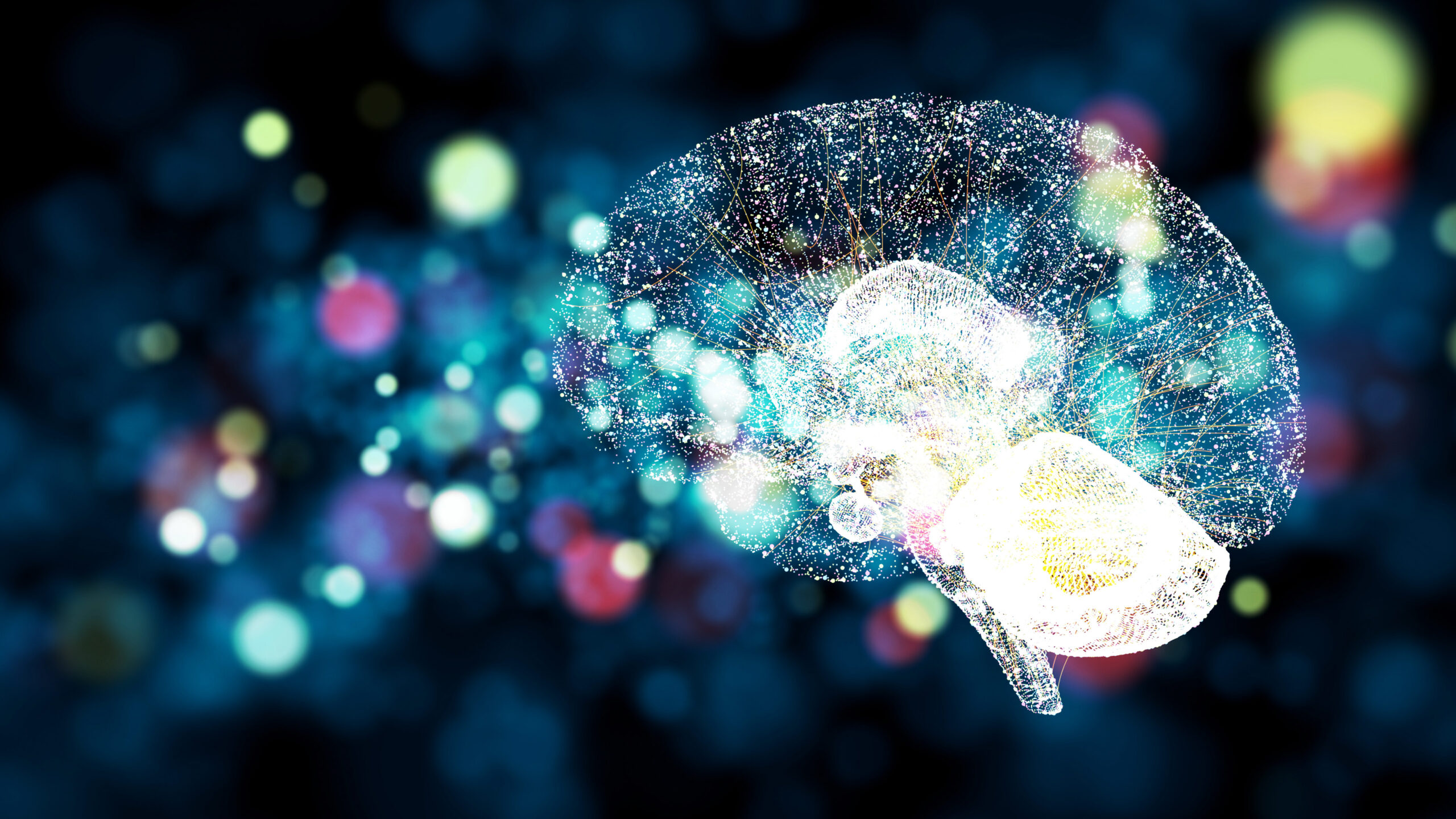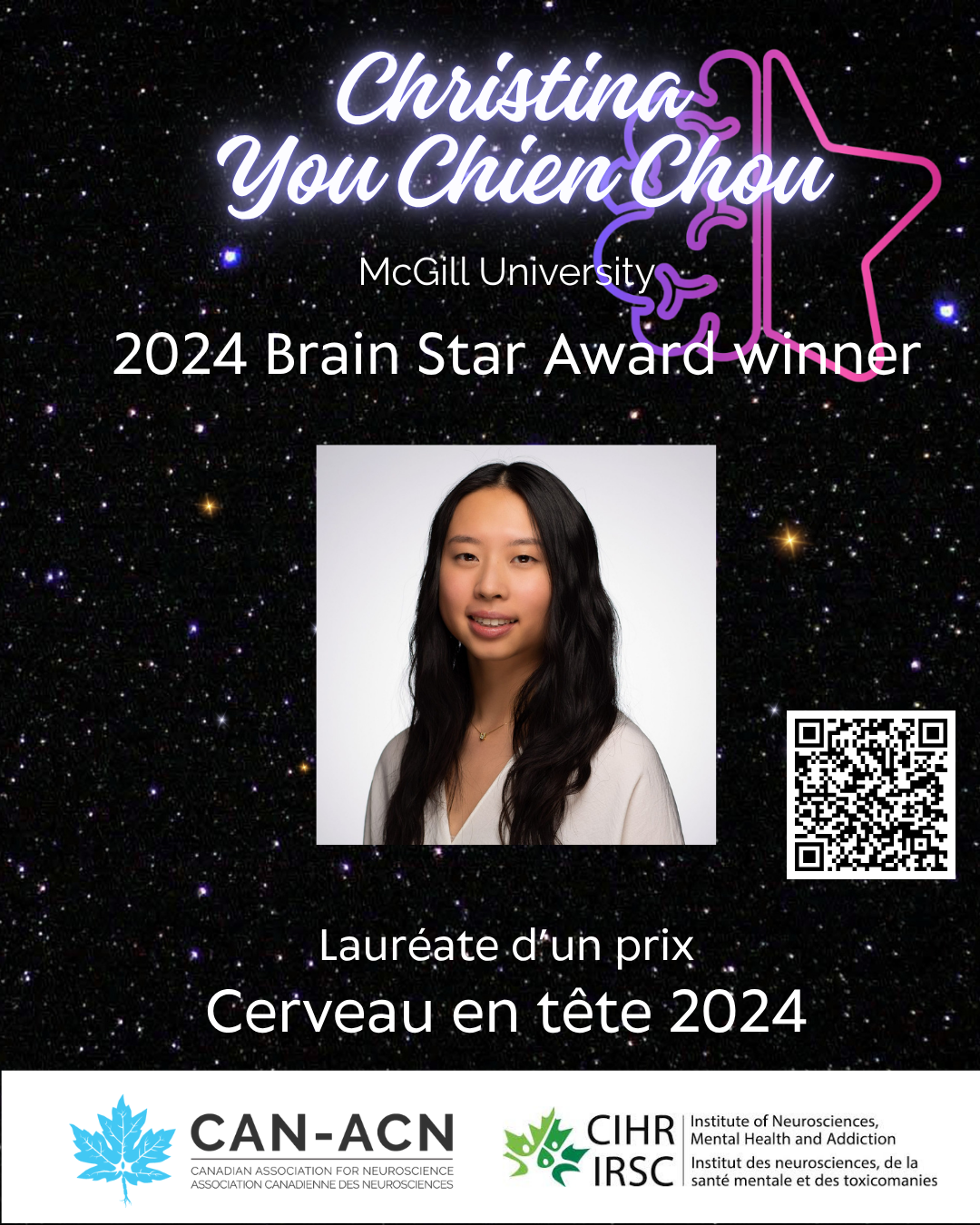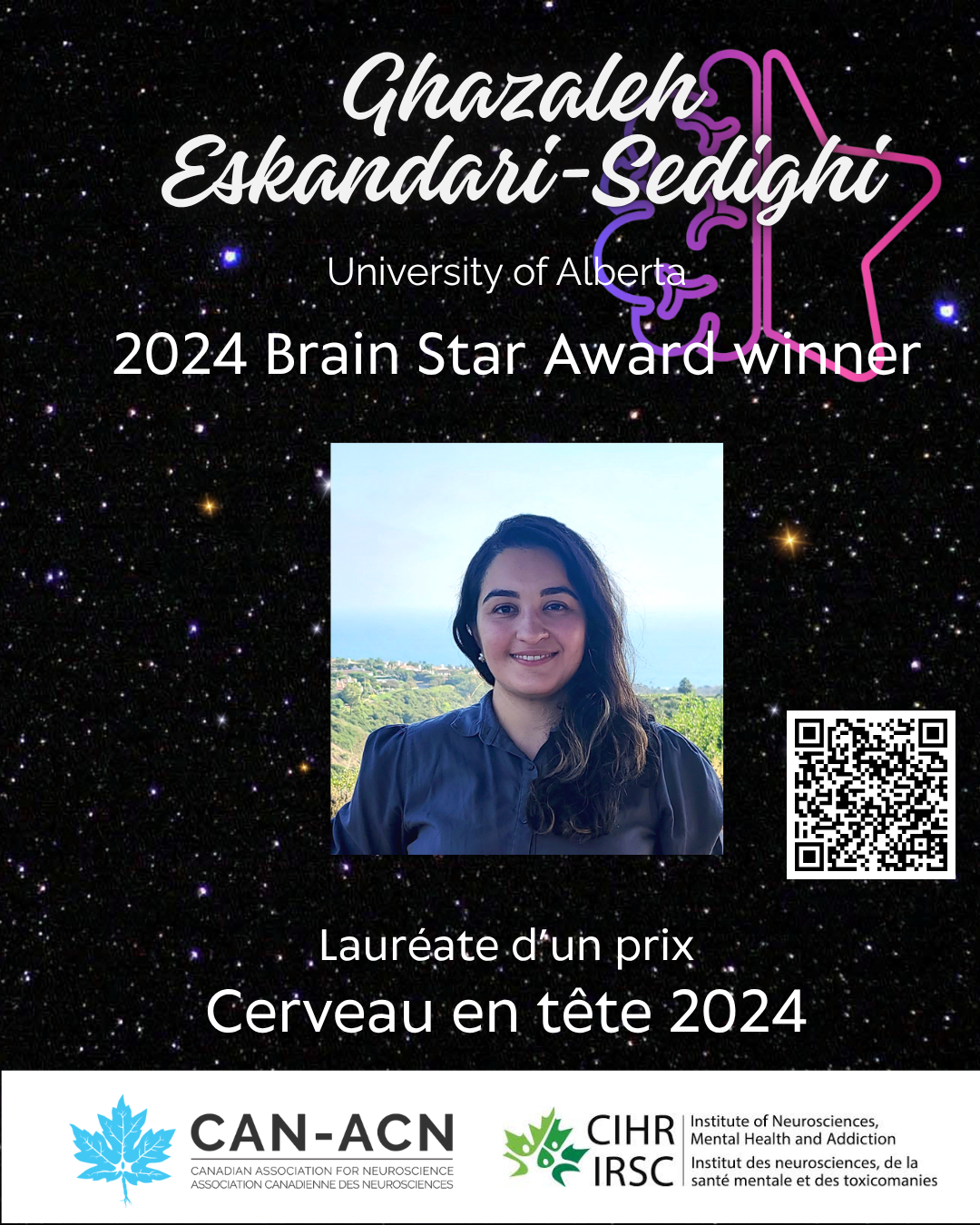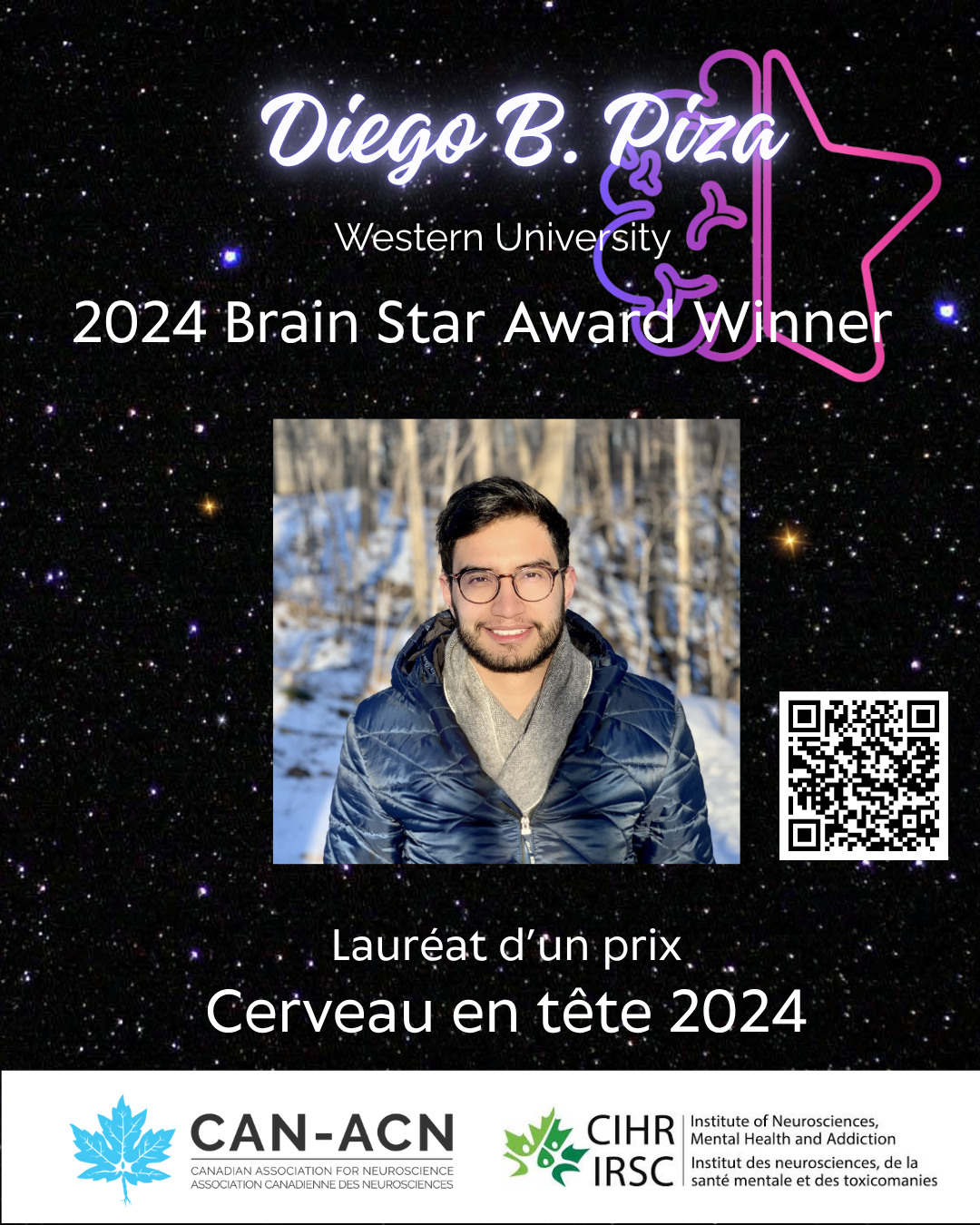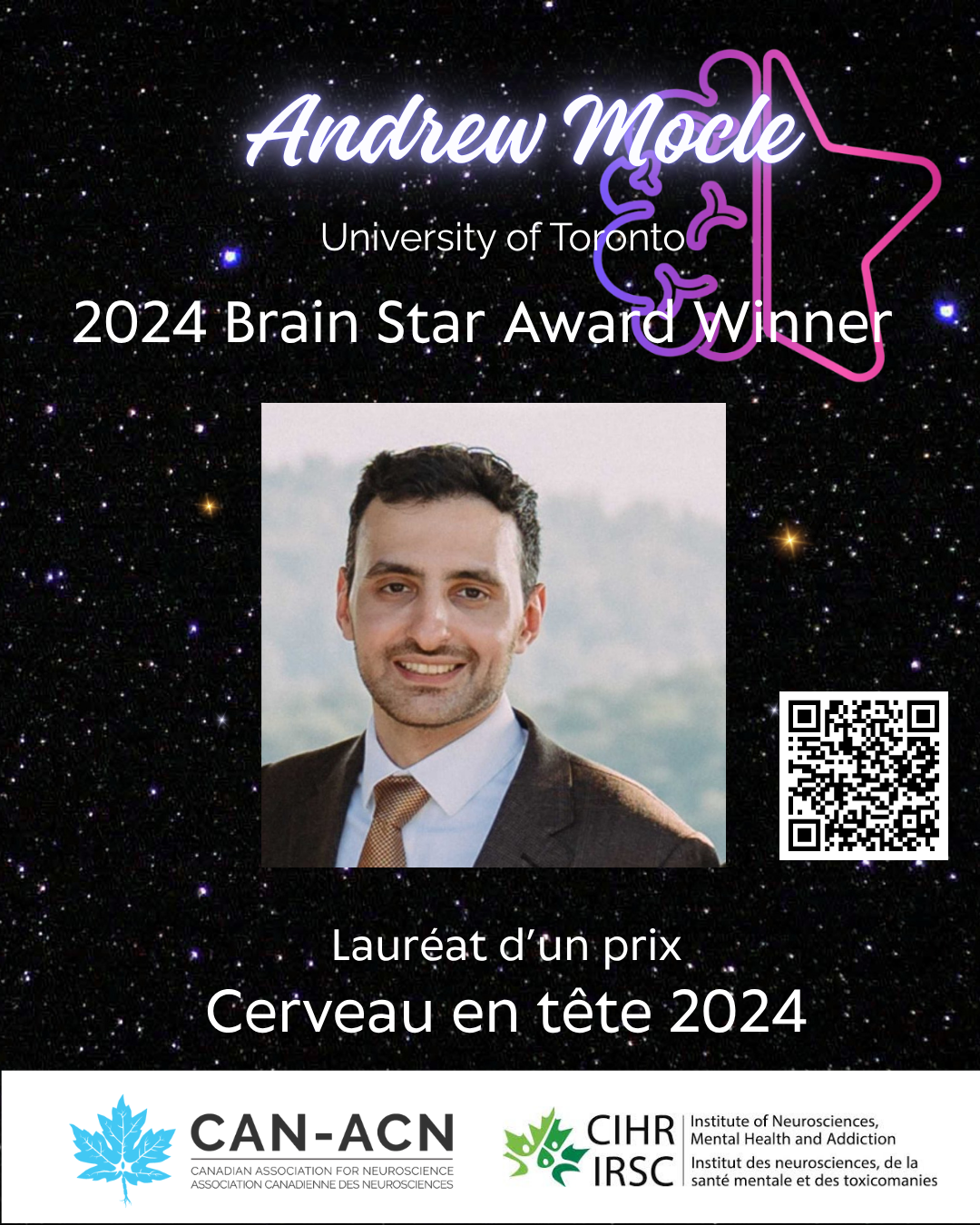Category: News
-
Read our December newsletter!
We invite you to read our latest newsletter CAN Connection – December Edition
-
Announcing the new co-chair of the CAN Advocacy committee: Dr. Susanne Schmid
The Canadian Association for Neuroscience is proud to announce that Dr. Susanne Schmid, Professor and Vice-Dean Basic Medical Sciences at Western University has accepted the invitation to be co-chair of the CAN Advocacy Committee. CAN wishes to thank Dr. Liisa Galea for her many years of service in the role of co-chair of advocacy, and…
-
Read our latest newsletter: CAN Connection – Fall 2025
We invite you to read our latest newsletter: CAN Connection – Fall 2025
-
Brain Star Award Feature: Christina You Chien Chou – McGill University
An optomapping approach to better understand connections in the visual cortex of the brain In the brain, information is passed from neuron to neuron via connections called synapses. Synaptic dysfunction unsurprisingly underlies many neurological diseases, such as autism, schizophrenia, and epilepsy. Understanding how synapses are wired up in a cell-type-specific way is fundamental to understanding…
-
CAN submits a brief to the Department of Finance pre-budget consultations
We invite you to read our submission to the Department of Finance pre-budget consultations
-
Brain Star Award Feature: Kassem Jaber, Montreal Neurological Institute
A new framework to assess placement of electrodes in the brain for epilepsy surgery Epilepsy is a chronic condition that is characterized by spontaneous recurring seizures. In clinical practice, the region which generates seizures is called the epileptic focus. The location of the focus can be localized by electrical measurement of brain activity, known as…
-
Brain Star Award Feature: Ghazaleh Eskandari-Sedighi, University of Alberta
Identification of CD33m as a new protective factor in Alzheimer’s Disease development. Immune cells in the brain, called microglia, are thought to be critical in Alzheimer’s disease (AD) development through numerous functions, including their ability to remove amyloid beta (Aβ), which is protein that accumulates in the brains of AD patients. In this study, Ghazaleh…
-
Read CAN’s brief submitted to the 2025 FINA Pre-budget consultations
We are happy to share with you CAN’s pre-budget brief submission for the Consultations launched by the Finance committee of the House of Commons. https://can-acn.org/wp-content/uploads/2025/07/CAN-FINA-Submission-July-2025_final-1.pdf Our two main recommendations are an effective doubling of tri-agency budget over the coming years, and increased investment in brain-related programs. We believe if multiple organizations submit similar recommendations, including the…
-
Brain Star Award winner feature: Diego B. Piza, Western University
Better understanding the role of vision in the brain’s representation of space by studying freely moving primates The hippocampus is a structure of the mammalian brain that has been implicated in spatial memory and navigation. Its role has been primarily studied in nocturnal mammals, such as rats, that lack many adaptations for daylight vision. Here,…
-
Brain Star Award Feature: Andrew Mocle, University of Toronto
Better understanding how ensembles of neurons are recruited in memory formation. The hippocampus is a critical brain region for encoding and recall of episodic memories. The physical trace left in the brain by memory formation is called an ‘engram’, and the process by which new engrams are formed is still unclear. In this work, Andrew…



